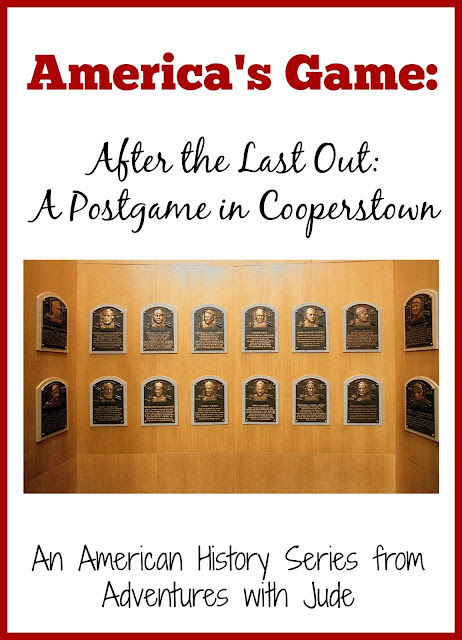The idea of a Baseball Hall of Fame began in 1935. That year, retired players Ty Cobb, Babe Ruth, Honus Wagner, Christy Mathewson and Walter Johnson, all pioneers of the modern sport, were named the first “class” of Hall of Famers. Each year, another group of players was elected to join this elite group. However, this was more of an “on paper honor,” rather than a museum-like actual “hall.” Members of the Clark Foundation, founded by Stephen Clark, sought to revive business and tourism to a city that was devastated by the Great Depression and Prohibition. On the supposed claim that General Abner Doubleday, a Cooperstown native, had invented the sport, they lobbied for a museum dedicated to baseball to be built. Though that claim has long been disputed and generally discredited, the word “Cooperstown” has become synonymous with “excellence in baseball.” Baseball's Hall of Fame was dedicated on June 12, 1939.
 |
| 1936 inaugural Baseball Hall of Fame inductees: L-R: Ty Cobb, Babe Ruth, Honus Wagner, Christy Mathewson, Water Johnson Public Domain, via Wikimedia Commons |
How does a player get into the Hall of Fame? He needs to have been part of baseball for ten or more years, retired for at least five, and pass through a selection process administered by either the Baseball Writers' Association of America or the Veterans Committee. Once placed on the ballot, he needs to garner 75% or more approval. Those who meet that threshold are admitted the following summer. Players who receive less than 75% of the vote can be reconsidered in a later year; those with less that 5% approval are dropped from the balloting permanently. Two former players are permanently banned from eligibility. Player and manager Pete Rose was banned in 2004 because of alleged betting against his team, and “Shoeless” Joe Jackson for his role in the 1919 World Series scandal.
 |
| Abbot and Costello in "Who's On First?" Photo Credit: Profile 365 |
From its first pitches in Antebellum America, baseball has become a symbol of the United States. Baseballs traveled the country in the rucksacks of Union soldiers, spreading the game from its origins in New Jersey to the west coast. It became a game where abandoned boys like Babe Ruth could shine, and where the lure of money both created and ruined Joe Jackson’s career. Race and gender didn’t matter, but the love of the game allowed all to find their place on a “field of dreams.” Being part of baseball doesn’t depend on your fielding skills. The game has permeated literature, movies, and the American dialect, including famous “Yogi-isms” like “It ain’t over till it’s over,” and when your favorite commentator announces that your team lost its fifth game in a row, “It’s deja vu all over again.” Baseball has become America’s Game.
Click Here to read other posts in the Series!
©2012- 2016 Adventures with Jude. All rights reserved. All text, photographs, artwork, and other content may not be reproduced or transmitted in any form without the written consent of the author. http://adventureswithjude.com



No comments:
Post a Comment